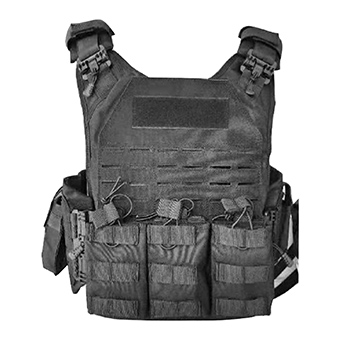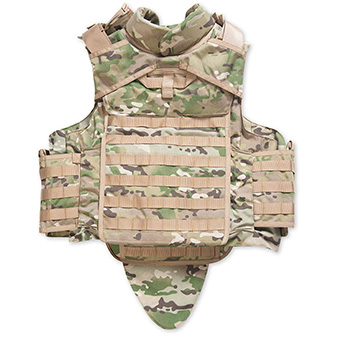Writer: admin Time: 2023-07-22 15:57:30 Browse:
Body armor plays a crucial role in providing personal protection for law enforcement officers, military personnel, and individuals in high-risk professions. However, it's essential to understand that body armor does have a limited lifespan. In this article, we will explore the factors that contribute to the expiration of body armor and discuss the importance of regular inspections and replacements to ensure optimal performance and safety.

Body armor typically consists of a carrier and ballistic inserts, such as soft panels or hard plates. These components work together to absorb and disperse the energy from projectiles, reducing the risk of injury. Over time, the materials used in body armor can degrade or lose their protective properties, making regular inspections and replacements crucial.
a) Wear and Tear: The daily use and exposure to various environmental conditions can cause wear and tear on body armor. Friction, UV exposure, moisture, and temperature fluctuations can all contribute to the degradation of the materials over time.
b) Manufacturer's Specifications: Each body armor manufacturer provides guidelines regarding the lifespan of their products. These specifications often take into account the expected wear and tear, as well as the degradation of the protective materials.
c) Material Degradation: The ballistic materials used in body armor, such as aramid fibers or ceramic composites, may degrade over time. Aramid fibers can experience a reduction in tensile strength and protective performance due to exposure to UV light, moisture, or certain chemicals. Ceramic plates can develop cracks or delamination, compromising their ability to withstand ballistic threats.
To ensure the continued effectiveness of body armor, regular inspections and maintenance are crucial. Here are some key points to consider:
a) Visual Inspections: Regularly inspect the carrier, seams, straps, and fasteners for signs of damage or wear. Look for tears, fraying, or loose stitching that may compromise the integrity of the body armor.
b) Ballistic Insert Inspections: If your body armor utilizes soft panels, inspect them for signs of bulging, deformation, or discoloration. For hard plates, check for cracks, chips, or any other visible damage.
c) Follow Manufacturer Recommendations: Refer to the manufacturer's guidelines for inspection frequency and recommended maintenance procedures. Some manufacturers may recommend specific cleaning methods or replacement intervals based on their product specifications.

While the lifespan of body armor can vary depending on the manufacturer and specific product, it is generally recommended to replace body armor after a certain period or if specific criteria are met:
a) Expiration Date: Some body armor manufacturers provide an expiration date based on their product's expected lifespan. It is crucial to adhere to these guidelines and replace the body armor accordingly.
b) Damage or Compromise: If your body armor shows signs of significant damage, such as penetration, cracks, or extensive wear, it should be replaced immediately. Even minor damage can affect its protective capabilities.
c) Loss of Manufacturer Certification: If the body armor no longer meets the manufacturer's certification standards, it should be replaced. This can occur if the materials have degraded or if the armor has been subjected to extreme conditions that exceed its design limitations.
Body armor does expire due to various factors such as wear and tear, material degradation, and manufacturer guidelines. Regular inspections, adherence to maintenance procedures, and timely replacements are essential to ensure that body armor maintains its intended protective capabilities. By staying vigilant and proactive in monitoring the condition of your body armor, you can continue to rely on its ability to safeguard you in high-risk situations.